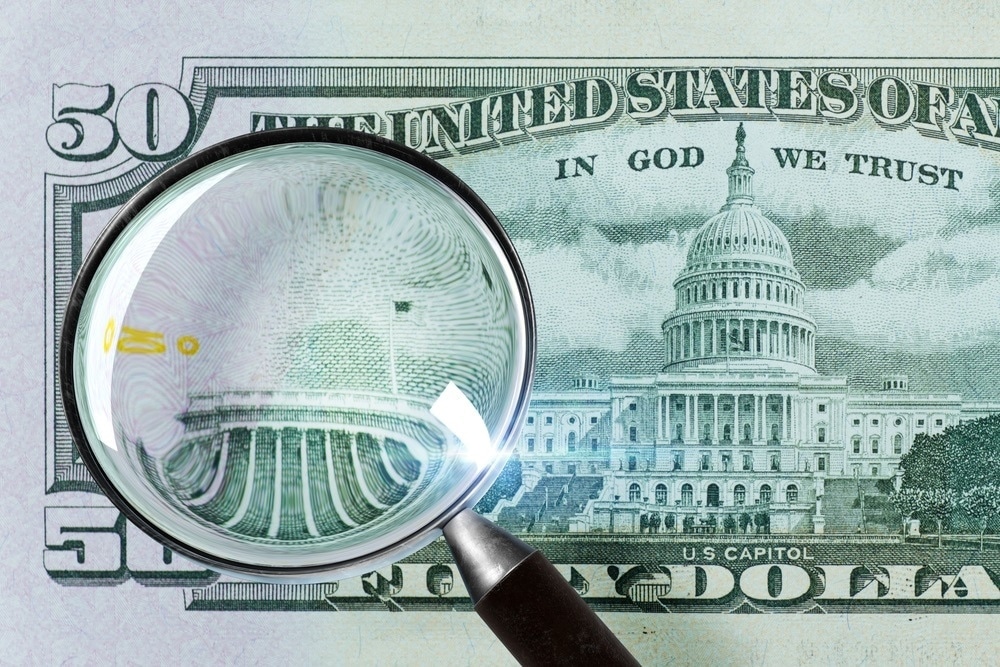
Image Credits: Standret/shutterstock.com
In 1969, a physics graduate student at Columbia University named Stephen Wiesner created the concept of quantum cash, but since then the fear of forgeries has remained a problem. How do you stop such counterfeiting?
Quantum Cash
When Wiesner conceived of quantum cash he described the use of one attribute of a photon, such as a vertical or horizontal polarization, to denote a banknote. The currency is considered quantum due to the use of photon light that can be decoded by a bank by reading the electromagnetic waves. At the time of their introduction it was thought that no one could clone this part of a photon; yet, the challenge was set as to how to make such a system work. The first problem was that the issuing bank might be the only holder of the unique identifier. Somehow, any anti-forgery scheme would have to start with a means of universal verification, much like a master key that could be viewed or used from multiple locations.
Today, quantum cash is still being developed, but it is not far away from Wiesner’s first thoughts and could soon be implemented in everyday life.
For example, researchers at Palacký University Olomouc in the Czech Republic led by Karel Lemr created and counterfeited quantum cash and published their findings in 2017 in npj Quantum Information. They described a method of transferring a pixelated banknote image using photon polarizations that signify grayscale shades that can then act as codes. Specifically, each bill would have randomly distributed photon polarizations. Variations in the waves, whether vertical, horizontal, circular or diagonal, would create a serial number-like code that the bank could use to verify the money.
As quantum information is not perfectly reproducible, a counterfeit could not be made. However, the system is not yet perfected due to a common issue of possible missing photons that, while they can be verified later, give a thief time to create forgeries by capitalizing on any time lags prior to verification.
Inventions to Prevent Counterfeiting
Lemr and his colleagues believe a thief could use an optimal cloner device to make a copy which would meet a threshold used to prevent counterfeiting. The standard is that a fake must match more than 84% of the original note’s photon polarizations.
Previously in 2012 at the Massachusetts Institute of Technology in Cambridge, Massachusetts, researchers working with Professor of Physics Edward Farhi PhD unveiled a quantum money scheme in which a mint could produce diagrams based on the same Alexander polynomial which were unforgeable but could be verified using a quantum computer. The diagrams can create two identical knots that look entirely different in terms of how they are put together, making it impossible to forge both.
Even further back, Farhi’s group proposed as a foundational theory that some quantum form (or some aspect of photons) had to be associated with a serial number. To then be verified, a quantum machine uses an algorithm to see if the serial number matches the quantum form after which the computer allows the money to be used. When the two do not match the money is not returned, but rather ruined.
Conclusion
While further research is required to make quantum cash usable, research related to the field is getting a boost. The European Union has dedicated 550 million euros to quantum research as part of a set of goals called Horizon 2020.

 Sign up to our Newsletters here
Sign up to our Newsletters here
Sources and Further Reading
This article was updated on the 25th April, 2019.
Disclaimer: The views expressed here are those of the author expressed in their private capacity and do not necessarily represent the views of AZoM.com Limited T/A AZoNetwork the owner and operator of this website. This disclaimer forms part of the Terms and conditions of use of this website.